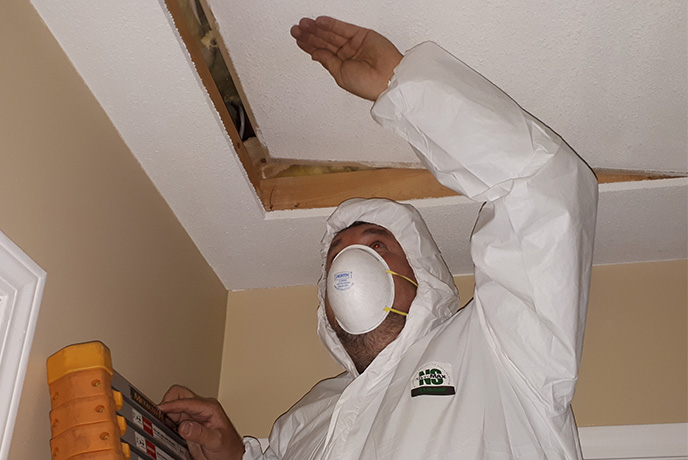

Call (866) 966-8751
Asbestos Inspections
At Pacific West Environmental Inspections, you will receive the following professional service and more:
- EPA – AHERA Asbestos Investigator Certified By The International Association Of Indoor Air Consultants.
- Provide A Complete Detailed On-Site Visual Assessment Documentation Survey Of The Buildings Older Materials
- Undertake Sample Material Collecting And Forward Samples To Be Tested At An Accredited Lab Using WorkSafe BC Protocols & Strict Guidelines.
- Provide A Detailed Narrative Report With Photos Along With Lab Results.
- Provide You With Recommendations For Remedial Action If Needed.

Asbestos-containing building materials and contamination can be a very serious health issue. You should not purchase or occupy a building that has the older type of building materials that may contain asbestos that has been damaged, deteriorated and/or disturbed in any way. An asbestos assessment survey investigation proved by Pacific West Environmental Inspections can help you before undertaking any type of renovations or demolition of the building.
Call (866) 966-8751
What Is Asbestos?
Asbestos can also be added to materials as diverse as cotton and cement. This combination of properties gives asbestos performance capabilities that are difficult to match.
What Has Asbestos Been Used For?
Asbestos has also been found in many products around the house. It has been used in clapboard; shingles and felt for roofing; exterior siding; pipe and boiler covering; compounds and cement, such as caulk, putty, roof patching, furnace cement and driveway coating; wallboard; textured and latex paints; acoustical ceiling tiles and plaster; vinyl floor tiles; appliance wiring; hair dryers; irons and ironing board pads; flame-resistant aprons and electric blankets; and clay pottery. Loose-fill vermiculite insulation may contain traces of “amphibole” asbestos.
What Health Problems are Associated with Exposure to Asbestos?
When Can Asbestos Be A Problem In The Home?
- Disturbing loose-fill vermiculite insulation which may contain asbestos.
- Removing deteriorating roofing shingles and siding containing asbestos, or tampering with roofing felt that contains asbestos.
- Ripping away old asbestos insulation from around a hot water tank.
- Sanding or scraping vinyl asbestos floor tiles.
- Breaking apart acoustical ceilings tiles containing asbestos.
- Sanding plaster containing asbestos, or sanding or disturbing acoustical plaster that gives ceilings and walls a soft, textured look.
- Sanding or scraping older water-based asbestos coatings such as roofing compounds, spackling, sealants, paint, putty, caulking or drywall.
- Sawing, drilling or smoothing rough edges of new or old asbestos materials.
How To Minimize The Asbestos Risks In The Home?
that fibres will not be released into indoor air. If the product is already protected or isolated, simply leave it alone.
It is a complex and expensive matter to remove asbestos, and should be done by an experienced contractor. When disturbing an asbestos product, maximum precautions must be taken to safeguard the workers and anybody else who may be nearby.
Asbestos dust must remain within the work area so that it cannot be breathed in by unprotected persons. It is essential to take adequate precautions. Everybody who works with asbestos should always wear an approved face mask and gloves, along with protective clothing. If you must handle small amounts of damaged asbestos-containing materials, follow these steps:
- Keep other people and pets away, and seal off the work area.
- Wet the material to reduce dust, making sure it is not in contact with electricity.
- If possible, do not cut or damage the materials further and do not break them up.
- Clean the work area afterwards using a damp cloth, not a vacuum cleaner, and seal the asbestos waste and cloth in a plastic bag.
- Check with your local municipality on how to dispose of asbestos-containing waste.
- Wash or dispose of clothing and shower after finishing the job.
ABOUT US
Our priority is to provide you with unsurpassed professional services. I take care of your best interest and dedicate myself to serving and representing only you with integrity, professionalism and honesty.
OFFICE HOURS
MONDAY TO FRIDAY: 6 AM TO 10 PM
SATURDAY: 6 AM TO 9 PM
SUNDAY: 12 NOON To 9 PM